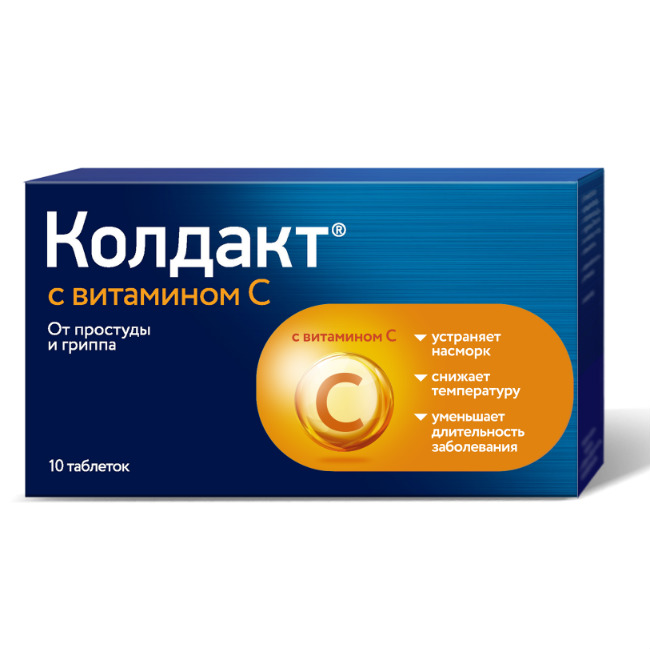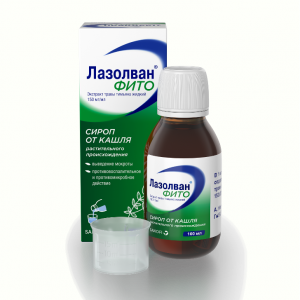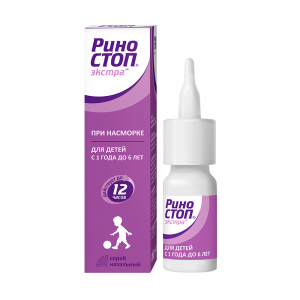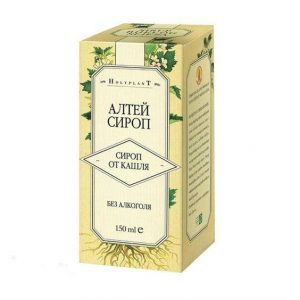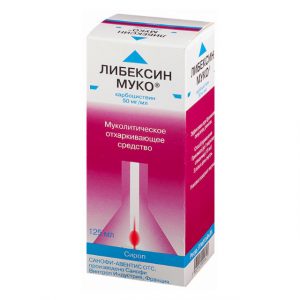Description
Pharmacological action
Pharmacological properties
Combined drug that has antipyretic, anti-inflammatory, decongestant, analgesic and anti-allergic effects, eliminates symptoms.
Pharmacodynamics
Paracetamol. It has analgesic and antipyretic effects similar to salicylates. Paracetamol also exhibits weak anti-inflammatory activity. In equal doses, the degree of analgesic and antipyretic effect is comparable to the action of aspirin.
Paracetamol lowers body temperature in patients with fever but It has an antipyretic, anti-inflammatory, decongestant, analgesic and anti-allergic effect, eliminates the symptoms of the common cold.
Pharmacodynamics
Paracetamol. It has analgesic and antipyretic effects similar to salicylates. Paracetamol also exhibits weak anti-inflammatory activity. In equal doses, the degree of analgesic and antipyretic effect is comparable to the action of aspirin.
Paracetamol lowers body temperature in patients with fever but It has an antipyretic, anti-inflammatory, decongestant, analgesic and anti-allergic effect, eliminates the symptoms of the common cold.
Pharmacodynamics
Paracetamol. It has analgesic and antipyretic effects similar to salicylates. Paracetamol also exhibits weak anti-inflammatory activity. In equal doses, the degree of analgesic and antipyretic effect is comparable to the action of aspirin.
Paracetamol lowers body temperature in patients with fever but In equal doses, the degree of analgesic and antipyretic effect is comparable to the action of aspirin.
Paracetamol lowers body temperature in patients with fever but In equal doses, the degree of analgesic and antipyretic effect is comparable to the action of aspirin.
Paracetamol lowers body temperature in patients with fever butrarely reduces normal temperature. Antipyretic effect through the hypothalamus. Heat reduction is achieved due to vasodilation and increased peripheral blood flow.
Phenylephrine hydrochloride. It is a vasoconstrictor from the group of sympathomimetics. It has a direct effect on a-adrenergic receptors. At therapeutic doses, does not affect ² ¹ ² ¹1-adrenergic receptors of the heart. Phenylephrine does not stimulate 2-adrenergic receptors of the bronchi or peripheral blood vessels.
The -adrenergic effects are believed to suppress the production of cyclic adenosine 3,5-monophosphate (cAMP) by inhibiting adenylcyclase, while the -adrenergic effects are caused by increased adenylcyclase activity.
Phenylephrine indirectly promotes the release of norepinephrine. Vasoconstriction is the main effect of phenylephrine in therapeutic doses.
Chlorphenamine maleate. It has a pronounced antagonistic effect on histamine H1 receptors. Antihistamines reduce or eliminate the effects of histamine by reversibly linking histamine H1 receptors in tissues.
Chlorphenamine also has anticholinergic activity. Antihistamines prevent the release of histamine, prostaglandins, leukotrienes, as well as the migration of inflammatory mediators.
The action of chlorpheamine includes the inhibition of histamine in smooth muscle tissue, a decrease in capillary permeability, and as a result, a decrease in edema in allergic reactions.
Ascorbic acid (vitamin C). Replenishes the increased need for vitamin C for colds and flu, especially in the initial stages of the disease. Increases the body’s resistance to infections, improves tolerance to paracetamol. Participates in various biochemical oxidation-reduction reactions.
is an effective antioxidant. Reception of ascorbic acid softens the course of the disease and shortens its duration.
Pharmacokinetics:
Paracetamol. Quickly and almost completely absorbed from the gastrointestinal tract. Maximum plasma concentrations are reached 10-60 minutes after ingestion.
Paracetamol is widely distributed in all body tissues. Penetrates through the placental barrier and is secreted with breast milk. Plasma protein binding is negligible at usual therapeutic concentrations, but increases with increasing concentrations.
Paracetamol is metabolized in the liver, First of all, in two ways: glucuronidation and sulfation. It is excreted by the kidneys, mainly in the form of conjugates of glucuronide and sulfate. The elimination half-life makes from 1 to 3 hours.
In severe renal impairment (creatinine clearance less than 30 ml / min), the excretion of paracetamol and its metabolites is delayed.
Phenylephrine hydrochloride. It is absorbed from the gastrointestinal tract and metabolized by monoamine oxidase during the initial passage through the intestinal wall and in the liver therefore, when phenylephrine is ingested, the hydrochloride has limited bioavailability. It is excreted by the kidneys almost completely in the form of a sulfate conjugate.
The maximum concentration of the drug in plasma is reached within 45 minutes – 2 hours, and the half-life of the drug from plasma is 2-3 hours.
Chlorphenamine maleate. It is relatively slowly absorbed from the gastrointestinal tract, the maximum concentration of chlorphenamine in blood plasma is reached 2.5-6 hours after taking the drug.
The substance has a low bioavailability of 25-50%. About 70% of chlorphenamine in the bloodstream binds to plasma proteins. It is exposed to a wide distribution in the tissues of the body, including the central nervous system (CNS).
Chlorphenamine undergoes significant metabolism during the initial passage. The duration of action is 4-6 hours. Children had faster and more complete absorption, faster clearance and a shorter half-life.
The elimination half-life is from 2 to 43 hours, even with an average duration of 4-6 hours. Part of chlorphenamine unchanged with metabolites was excreted by the kidneys.
Ascorbic acid. Easily absorbed after oral administration. In the usual dosing regimen (30-180 mg / day), about 70-90% of the vitamin is absorbed, with a further increase in the dose, absorption decreases (50-20%).
Ascorbic acid is widely distributed in tissues. High concentrations of vitamin A are found in the liver, white blood cells, platelets, glandular tissue, and the lens of the eye. About 25% of the vitamin binds to plasma proteins. Ascorbic acid passes through the placental barrier. The concentration in cord blood is usually 2-4 times higher than in maternal blood.
Ascorbic acid reversibly oxidizes to dehydroascorbic acid. A certain amount is metabolized to inactive derivatives (sulfates and oxalates) and excreted in the urine.
Indications
Management of the symptoms of colds and flu, such as fever, headache, chills, pain in joints and muscles, nasal congestion, runny nose, sneezing, pain in the sinuses and throat.
Contraindications
Hypersensitivity to the components of the drug.
Taking monoamine oxidase inhibitors (simultaneously or in the previous 14 days), tricyclic antidepressants, beta-blockers, and other sympathomimetics.
Severe cardiovascular disease, arterial hypertension, hyperthyroidism, angle-closure glaucoma, pheochromocytoma.
Pregnancy, the period of breastfeeding.
Children under 12 years old.
Precautions:
Diabetes mellitus, impaired liver function, impaired renal function, prostatic hyperplasia, hemolytic anemia, asthma, chronic obstructive pulmonary disease (chronic bronchitis), pulmonary emphysema, acute hepatitis, chronic exhaustion or dehydration, pyloroduodenal stenosis, epilepsy, cardiovascular disease, glucose-6-phosphate dehydrogenase deficiency, congenital hyperbiluben.
You should not take other paracetamol-containing drugs, as well as other drugs that affect liver function.
Caution should be taken in patients with alcohol dependence, as well as with recurrent formation of kidney stones.
Use during pregnancy and lactation
The use of the drug is not recommended during pregnancy and during breastfeeding.
Safety during use during pregnancy and during breastfeeding has not been specifically studied. Data on the potential effects of each active substance on pregnancy and breastfeeding are presented below.
Pregnancy
Epidemiological studies during pregnancy have shown that there is no adverse effect with the use of oral paracetamol at the recommended dose. Studies of reproductive function in evaluating an oral preparation did not reveal signs of malformations or fetotoxicity.
Under normal conditions of use, paracetamol can be used throughout pregnancy after assessing the benefit-risk ratio.
Limited data are available on the use of phenylephrine in pregnant women. The narrowing of the vessels of the uterus and a decrease in blood flow in the uterus with phenylephrine can lead to fetal hypoxia. The use of phenylephrine during pregnancy should be avoided.
Epidemiological data on the use in humans have not revealed a connection between chlorphenamine and congenital malformations. However, due to the insufficiency of controlled clinical trials, the use of chlorphenamine maleate during pregnancy should be avoided.
Breastfeeding
Paracetamol is excreted in breast milk, but in quantities that are not clinically significant. According to published data, paracetamol is not contraindicated during breastfeeding.
There is no data on the release of phenylephrine with breast milk. Phenylephrine should be avoided during breastfeeding.
There is no information on the use of chlorphenamine during breastfeeding. It should be avoided by women who are breastfeeding.
Special instructions
In order to avoid toxic liver damage, the drug should not be combined with the use of alcoholic beverages.
In connection with the stimulating effect of ascorbic acid on the synthesis of corticosteroid hormones, it is necessary to monitor renal function and blood pressure. With prolonged use of large doses, inhibition of the function of the insular apparatus of the pancreas is possible, therefore, during treatment it must be regularly monitored.
In patients with a high iron content in the body, ascorbic acid should be used in minimal doses.
The administration of ascorbic acid to patients with rapidly proliferating and intensively metastatic tumors may aggravate the course of the process.
Ascorbic acid as a reducing agent can distort laboratory test results (blood glucose, bilirubin, activity of hepatic transaminases and LDH).
Impact on the ability to drive transp. Wed and fur .:
During treatment, it is not recommended to drive a vehicle or other mechanisms, requiring concentration and high speed of psychomotor reactions.
Composition
Each film-coated tablet contains
Active ingredients:
paracetamol
650.00 mg,
phenylephrine hydrochloride
10.00 mg,
chlorphenamine maleate srdlk 4, srdlk acid 4 mg
,
31.35 mg,
in terms of ascorbic acid
30.00 mg
**: contains 1.35 mg of stearic alcohol
Excipients: colloidal silicon dioxide 15.00 mg, pregelatinized starch 50.00 mg, microcrystalline cellulose 95.65 mg, sodium carboxymethyl starch 30.00 mg, povidone K30 30.00 mg, talcum powder 5.00 mg, magnesium stearate 9.00 mg.
Film coat: Opadry brown OY56524 27.90 mg.
Composition Opadra brown OY56524: hypromellose 63.650%, titanium dioxide (E171) 20.140%, iron dye oxide (red) (E172) 8.860%, macrogol 6000 6.300%, iron dye oxide (yellow) (E172) 1.050%.
Dosage and Administration
Inside.
Adults – 1 tablet every 4-6 hours, but no more than 6 tablets per day.
Children over 12 years of age – 1 tablet every 4-6 hours, but not more than 4 tablets per day. It is recommended to swallow the tablet whole, without chewing, with water.
The course of treatment should not exceed 5 days.
If symptom relief is not observed within 3 days after starting the drug, consult a doctor.
Doses for special categories of patients
Hepatic insufficiency
In patients with impaired liver function or Gilbert’s syndrome, it is necessary to reduce the dose or increase the interval between doses.
Renal failure
In case of severe renal failure (creatinine clearance <10 ml / min), the interval between doses should be at least 8 hours. Elderly patients Dose adjustment is not required for elderly patients. Side effects Classification of the frequency of adverse reactions: very often (? 1/10) often (? 1/100, <1/10) infrequently (? 1/1000, <1/100) rarely (? 1/10000, <1/1000) is very rare (<1/10000), the frequency is unknown (according to available data, it is not possible to determine the frequency of occurrence). From the blood and lymphatic system: Very rarely: thrombocytopenia, agranulocytosis, leukopenia, pancytopenia. On the part of the immune system: Rarely: hypersensitivity, angioedema. Frequency unknown: anaphylactic reaction, Stevens-Johnson syndrome, toxic epidermal necrolysis. Mental disorders: Rarely: nervousness, insomnia. From the nervous system: Often: drowsiness. Rarely: dizziness, headache. From the heart: Rarely: tachycardia, heart palpitations. From the vessels: Rarely: arterial hypertension. From the gastrointestinal tract: Often: nausea, vomiting. Rarely: constipation, dry oral mucosa. From the liver and biliary tract: Rarely: increased activity of hepatic transaminases. From the skin and subcutaneous tissues: Rarely: skin rash, itching, erythema, urticaria. Ascorbic acid Ascorbic acid is generally well tolerated. Large doses can cause diarrhea and other gastrointestinal upsets, and also lead to hyperoxaluria and the formation of kidney stones. Drug Interactions Paracetamol The anticoagulant effect of warfarin and other coumarins can be enhanced with prolonged regular use of paracetamol, while increasing the risk of bleeding. Intermittent use of paracetamol has no significant effect. Hepatotoxic substances can lead to the accumulation of paracetamol and an overdose. The risk of hepatotoxicity of paracetamol increases with the use of drugs, inducing microsomal liver enzymes, such as barbiturates, antiepileptic drugs (e.g. phenytoin, phenobarbital, carbamazepine) and drugs for treating tuberculosis, such as rifampicin and isoniazid. Metoclopramide increases the absorption rate of paracetamol and increases its maximum concentration in blood plasma. Similarly, domperidone may increase the absorption rate of paracetamol. Paracetamol may increase the elimination half-life of chloramphenicol. Paracetamol may lead to a decrease in the bioavailability of lamotrigine, with a possible decrease in the effect of the latter, which may lead to a possible induction of metabolism in the liver. The absorption of paracetamol can be reduced while it is used with colestyramine, but the decrease in absorption is not significant if colestyramine is used an hour later. Regular use of paracetamol together with zidovudine can cause neutropenia and increase the risk of liver damage. Probenecid affects the metabolism of paracetamol. In patients simultaneously using probenecid, the dose of paracetamol should be reduced. Hepatotoxicity of paracetamol increases with prolonged excessive use of ethanol (alcohol). Paracetamol may interfere with test results of phosphoric tungsten uric acid. Phenytoin reduces the effectiveness of paracetamol, therefore, patients taking phenytoin should avoid frequent use of paracetamol, especially in high doses. Indirect anticoagulants: repeated administration of paracetamol for more than 4 days increases the anticoagulant effect. The international normalized ratio (INR) should be monitored during and after the simultaneous use of paracetamol (especially in high doses and / or for a long time) and coumarin derivatives. Irregular use of paracetamol has no significant effect. Propantheline and other drugs that slow the evacuation of the stomach reduce the absorption rate of paracetamol, which can delay or reduce the onset of the effect. Prolonged concomitant use of paracetamol and other NSAIDs increases the risk of developing analgesic nephropathy and renal papillary necrosis, the onset of end-stage renal failure. The simultaneous long-term administration of high doses of paracetamol and salicylates increases the risk of developing kidney or bladder cancer. Phenylephrine hydrochloride This drug is contraindicated in patients taking or taking monoamine oxidase inhibitors in the last two weeks. Phenylephrine can potentiate the effects of monoamine oxidase inhibitors and induce hypertensive crisis. Concomitant use of phenylephrine with other sympathomimetic drugs or tricyclic antidepressants (e.g. amitriptyline) may increase the risk of side effects from the cardiovascular system. The use of phenylephrine can lead to a decrease in the effectiveness of beta-blockers and other antihypertensive drugs (e.g., debrisoquine, guanethidine, reserpine, methyldopa). The risk of hypertension and other cardiovascular side effects may increase. Concomitant use of phenylephrine with digoxin and cardiac glycosides can lead to an increased risk of heart rhythm disturbance or heart attack. Concomitant use of ergot alkaloids (ergotamine) may increase the risk of ergotism. Chlorphenamine maleate Antihistamines, such as chlorphenamine, can enhance the effect of opioid analgesics, anticonvulsants, antidepressants (tricyclic and monoamine oxidase inhibitors), other antihistamines, antiemetics, antipsychotics, anxiolytic drugs, other anxiolytic drugs, anxiolytic drugs and other drugs . Since chlorphenamine has some degree of anticholinergic activity, the effects of anticholinergic drugs (for example, some psychotropic drugs, atropine and drugs for the treatment of urinary incontinence) can be enhanced with the use of this drug. This can lead to tachycardia, dry oral mucosa, gastrointestinal disturbances (such as colic), urinary retention, and headache. Phenytoin metabolism can be suppressed by chlorphenamine, and phenytoin toxicity may develop. Ascorbic acid Ascorbic acid increases the absorption of drugs of the penicillin group, iron, reduces the clinical effect of heparin and indirect anticoagulants, increases the risk of crystalluria in the treatment of short-acting salicylates and sulfonamides, slows the excretion of acid by the kidneys, increases the excretion of drugs with an alkaline reaction (in including alkaloids), reduces the concentration in the blood of oral contraceptives. Should not be prescribed in the first month of treatment with deferoxamine due to increased iron toxicity. Large doses of ascorbic acid can lead to an increase in the concentration of ethinyl estradiol in blood plasma in women taking oral contraceptives. The simultaneous administration of ascorbic acid and fluphenazine can lead to a decrease in the concentration of fluphenazine in the blood plasma. Overdose of Symptoms of Overdose symptoms are mainly due to the presence of paracetamol. In acute overdose, paracetamol can have a hepatotoxic effect and even cause liver necrosis. An overdose of paracetamol, including an overall high dose level after a long period of therapy, can lead to analgesic nephropathy, with irreversible liver failure. Patients should be warned about the inadmissibility of the simultaneous administration of other drugs containing paracetamol. There is a risk of poisoning, especially in elderly patients and young children, people with liver disease, in the case of chronic alcoholism, patients with chronic malnutrition and patients receiving microsomal enzyme inducers. An overdose of paracetamol can lead to liver failure, encephalopathy, coma, and death. Symptoms of an overdose of paracetamol on the first day include pallor, nausea, vomiting, and anorexia. Abdominal pain can be the first sign of liver damage, and it can appear only after 24-48 hours, and sometimes 4-6 days after taking the drug. Most often, signs of liver damage occur 72-96 hours after taking the drug. Possible impaired glucose metabolism and metabolic acidosis. Acute renal failure and acute renal tubule necrosis can develop even in the absence of severe liver damage. Cases of cardiac arrhythmia and pancreatitis have been reported. In case of overdose, intoxication is possible, especially in elderly patients, children, patients with liver diseases (caused by chronic alcoholism), in patients with eating disorders, as well as in patients receiving inducers of microsomal liver enzymes, in which fulminant hepatitis, liver failure, cholestatic hepatitis, cytolytic hepatitis can develop, in the above cases – sometimes with a fatal outcome. Overdose threshold in these categories of patients may be reduced. The clinical picture of acute overdose develops within 24 hours after taking paracetamol. Symptoms of an overdose of phenylephrine include hemodynamic changes and cardiovascular collapse with respiratory depression manifested in the form of, for example, drowsiness, followed by excitement (especially in children), visual impairment, skin rash, nausea, vomiting, persistent headaches, nervousness dizziness, insomnia, circulatory disorders (thrombocytopenia, agranulocytosis, leukopenia, pancytopenia), coma, convulsions, arterial hypertension and bradycardia. Symptoms of an overdose of chlorphenamine maleate include drowsiness, respiratory arrest, cramps, anticholinergic effects, dystonic reactions, and cardiovascular collapse, including arrhythmia. In children, overdose symptoms may include impaired coordination, agitation, tremors, behavior changes, hallucinations, convulsions, and anticholinergic effects. Symptoms of an overdose of ascorbic acid: nephrolithiasis, insomnia, irritability, hypoglycemia. Treatment Immediate hospitalization is required to treat an overdose of paracetamol. The quantitative determination of paracetamol in plasma before treatment as early as possible after overdose. Laboratory studies of the activity of microsomal liver enzymes should be carried out at the beginning of treatment and then every 24 hours. In most cases, the activity of microsomal liver enzymes is normalized within 1-2 weeks. In very severe cases, a liver transplant may be required. The introduction of SH-group donors and precursors of glutathione synthesis – methionine and acetylcysteine – is most effective in the first 8 hours. The need for additional therapeutic measures (further administration of methionine, iv administration of acetylcysteine) is determined depending on the concentration of paracetamol in the blood, as well as on the time elapsed after its administration. Symptomatic treatment. Treatment for an overdose of paracetamol requires immediate treatment. During the first 48 hours after an overdose, it is advisable to use N-acetylcysteine intravenously or orally as an antidote to paracetamol, it is possible to rinse the stomach and / or use methionine orally. It is advisable to use activated carbon and control respiration and circulation. In case of seizures, diazepam may be used. Treatment of phenylephrine overdose includes fast gastric lavage, symptomatic and supportive therapy. The hypertensive effect can be stopped by the introduction of an intravenous alpha-receptor blocker. In case of seizures, diazepam may be used. Treatment of an overdose of chlorphenamine maleate includes gastric lavage in case of massive overdose or stimulation of vomiting. After this, it is possible to prescribe activated carbon and a laxative to slow absorption. In case of seizures, sedation should be performed with intravenous diazepam or phenytoin. In severe cases, hemoperfusion can be performed. Treatment of an overdose of ascorbic acid is symptomatic, it may be necessary to conduct forced diuresis. Storage conditions At a temperature not exceeding 25 ° C. Keep out of the reach of children. The Expiration of is 3 years. Form of Treatment tablets
